Have you got green fingers? Fancy trying your hand at growing an Olive tree? If you’d like to know more about all aspects of Olive tree care, you’ve come to the right place!
You may think that Olive trees (also known as Olea Europaea) can only be grown in beautifully warm Mediterranean countries, but you’d be wrong. They can easily be grown in the UK. They may even produce fruit in warm UK summers!
Olive trees are incredibly hardy and with the correct care, they can successfully grow and thrive in most climates. Not to mention they make impressive additions to your garden!
From how to provide the best care for your tree, to overcoming poor fruit production, we’ve got lots of tips and advice about Olive tree care in this useful blog!
Read More: The Best Food and Drink Recipes That Contain Olives
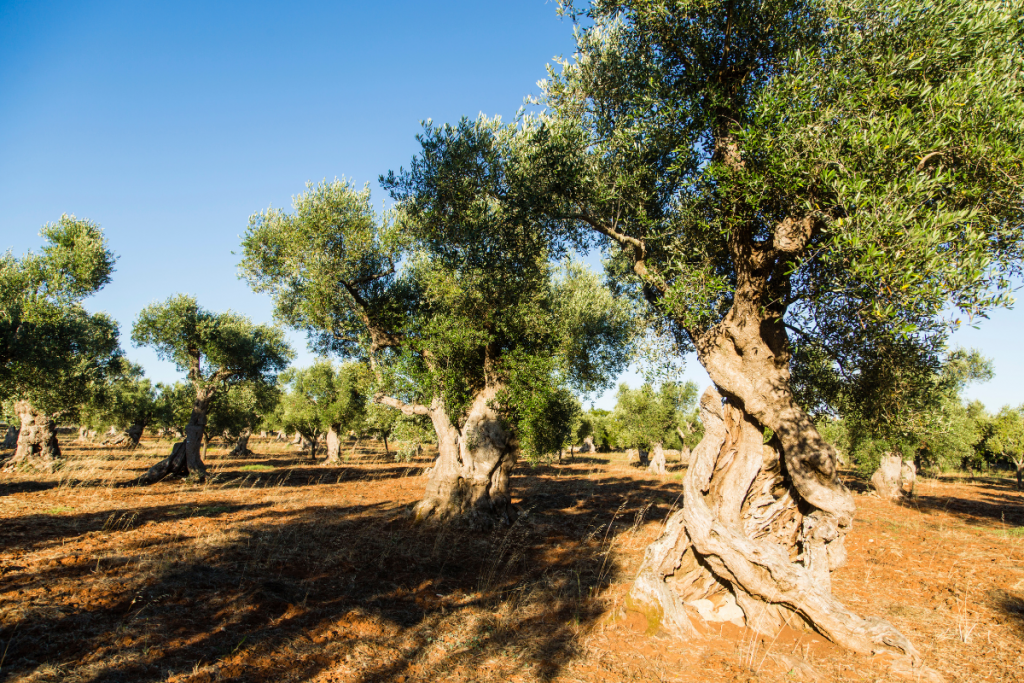
How to grow olive trees
In the UK, it’s best to grow Olive trees in pots. This means you can move them around according to the unpredictable British weather! In the late spring and summer months, they can be moved to areas where they’ll get plenty of sunshine. Once the winter arrives it’s advisable to move them somewhere more sheltered against the wind.
During the first year or two, your Olive tree can be kept in the pot provided by us, after this it will need to be put into a bigger pot so the roots have plenty of room to grow. It also ensures the soil doesn’t lose its nutrients.
When you come to choose your new pot, pick one that’s deep with drainage holes (add more if necessary). Add an additional inspection hole just above the base to allow you to feel the soil moisture level. If the soil is dry you should water, if wet your plant doesn’t need watering yet.
Drainage and soil moisture levels are important for Olive Trees, this is because Olive trees are used to dry climates, and won’t take kindly to having a soggy base.
Read More: Rising Demand For Olive Trees in the UK

Planting your olive tree
There’s no way around it, Olive trees demand well-drained soil. Although they can grow in most types of soil, if the dampness at the roots can’t pass through, they’ll die. If plant your Olive Tree make sure to choose an area that is not susceptible to waterlogging in the winter.
However, don’t despair, if you don’t want to keep your Olive tree in a pot, there is something you can do:
- Dig a hole roughly the same size as the tree’s container and half the size again. Take the tree out and have a look at the roots, leaving the root ball as undisturbed as possible. When you plant the tree, try not to add massive amounts of soil or organic matter. This is because it could limit any new growth of the roots and stop them from growing into the natural soil.
- Add Agricultural gravel to the hole before the soil to increase drainage. Remember, Olive trees hate wetness!
- Alternatively, you can re-pot your Olive tree. If so, allow the soil to dry out before you re-pot.
- Loosen the soil along the edges of the pot and firmly pull the tree up by gripping the main stem base.
- Pop some extra soil into the new pot and place the tree into it.
- Fill the pot in with compost and soil.
- Keep your Olive tree watered for a few weeks as this will allow the roots to grow.
Olive trees should be re-potted every few years until they reach their full height. The best time to re-pot is in autumn or late spring. However, make sure your tree is protected if the temperature suddenly drops.
Read More: How to Create Your Own Mediterranean Styled Garden at Home
Where to put your olive tree
The most suitable places for Olive trees are mild regions and gardens that are well protected. However, with the right care and attention, they can grow well in most areas.
To be able to produce fruit, Olive trees need lots of sunlight. Try and place your tree in a sun trapped area of your garden. Walls that are south facing are perfect choices!
If you live in colder areas or your garden has less protection, it’s advisable to grow your Olive tree indoors. An unheated conservatory or greenhouse is ideal, however, your Olive Tree will need direct sunlight to survive. This allows your tree to get enough sun whilst still being protected from the cold spells.
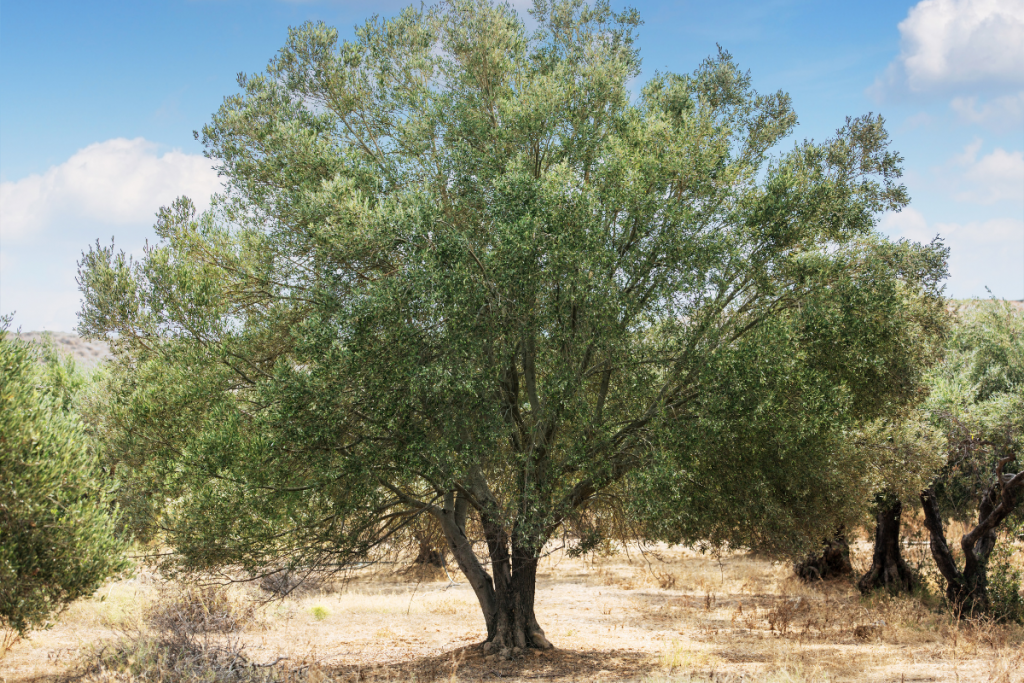
Looking after olive trees
Watering and feeding
We’ve established that Olive trees don’t like wet or overly damp conditions. Whether you’ve re-potted your tree or you’ve planted it in the ground, free drainage is essential. During the summer, your Olive tree will only need watering in small amounts.
It’s a good idea to let the soil dry out before you water it again, to prevent it from becoming too wet. Keep in mind that your Olive tree is a Mediterranean plant that’s used to incredibly dry conditions. During the winter, your tree will need very little to no water.
When it comes to feeding your tree, they don’t actually need any special feed, however, a small amount of balanced liquid fertiliser is a good idea.
Pruning
Olive trees are slow-growing plants, which means they don’t need much upkeep – such as pruning. If you want to, you can pull back some of the new growth as this means the tree can produce new shoots, creating a beautiful bushy tree.
If you do decide to prune, be sure to get rid of any dead branches immediately. You can also remove any branches that are making the tree look misshaped.
If you want to prune to reshape your tree, it shouldn’t be done before it’s 2-4 years old. This is because a young Olive tree needs lots of leaves in order to have the energy to grow into a large, healthy plant.
If you over-prune your tree, you run the risk of it growing water shoots that won’t produce any fruit.
Read More: The Ultimate Guide to Topiary
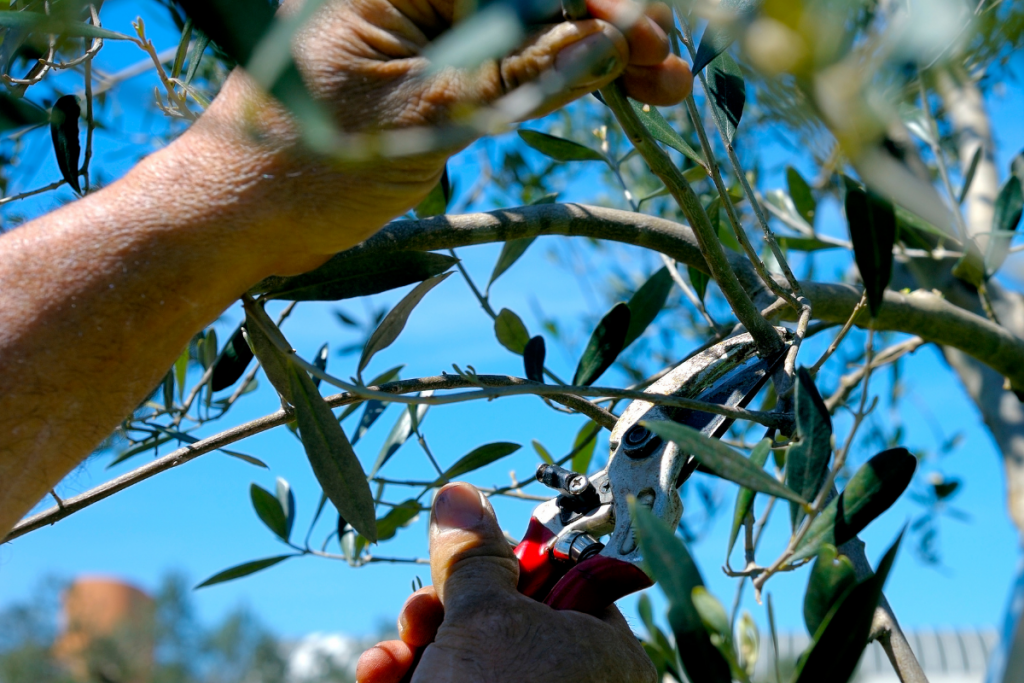
Tips on overcoming olive tree issues
Winter protection
Olives are surprisingly hardy and can live in temperatures as low as -10C – -15C (dependent size), but only for short periods of time. If you’re experiencing long spells of freezing temperatures, it’s a good idea to wrap your Olive in a special fleece. If you’ve re-potted your tree, put it under cover so it doesn’t freeze.
A young olive is particularly susceptible to damage caused by freezing temperatures, so be sure to take extra care of it.
Poor fruit production
The growing season for Olives is in spring and summer, and if the climate is warm enough your tree may start growing fruit at around 3-5 years old.
Although this is possible in the UK, you may not receive bumper lots of fruits since the climate is rarely consistent. Olives are self-fertile and they need a two month period of cold temperatures to successfully grow fruit.
It’s also important to remember that the fruit of your tree is produced at the tips of the previous growth. This is another reason to avoid excessive pruning as it can prevent your plant from producing fruit and flowers.
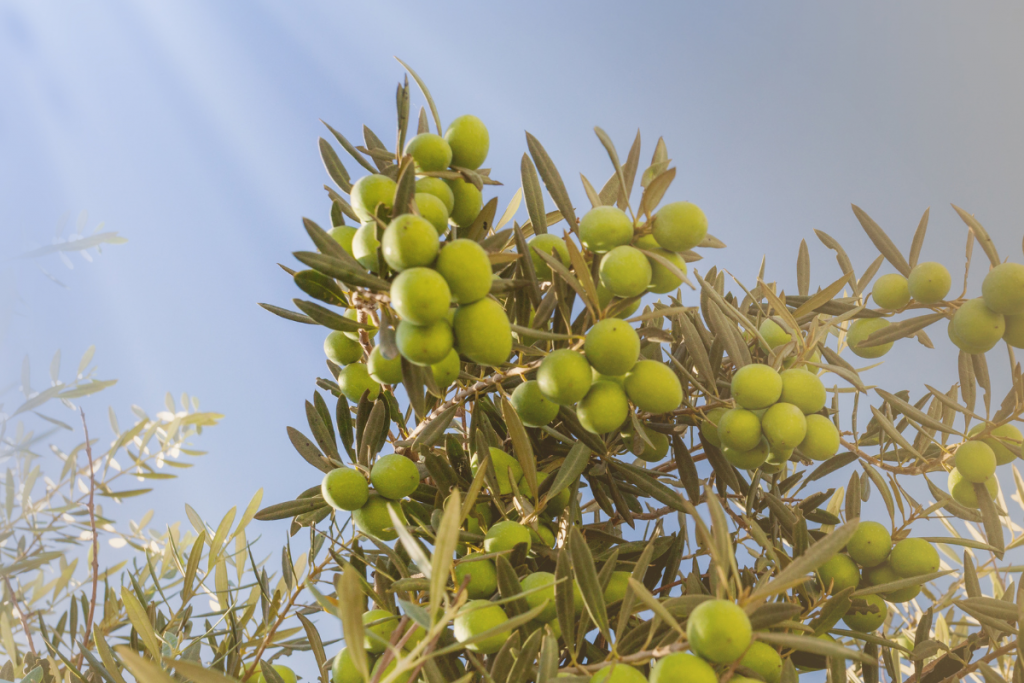
Dropping leaves
Olive trees are evergreen, meaning that they don’t lose their leaves seasonally like other species. If yours is dropping leaves, then it’s a sign that something is wrong.
One big reason for this problem is dehydration. Although it’s true that Olive trees are used to drought, it’s important not to let them dry out completely, as they do still need watering.
Olive trees can also stop flowering if you have dry soil conditions. Once you water it, it should start to regrow and flower again.
FAQs
How do you look after an olive tree?
Olive tree care may seem complicated at first, but with a bit of research and planning, they’re fairly easy plants to look after. First, decide whether you’re going to re-pot or plant it straight into the ground. Both methods have pros and cons, and it depends on various factors.
Planting it straight into the ground is ideal if you live in warmer regions, as you won’t have to move it around to avoid cold spells. On the flip side, Olives that are being grown in colder areas may be better off being re-potted. This allows you to move them during cold spells.
Are olive trees high maintenance?
Olives are surprisingly low maintenance plants and they react well to many different soil types. The most important thing to remember is to get the watering right. Olives hate wet conditions so over-watering them is a big no-no.
Once you’ve planted your Olive, it requires very little upkeep. You won’t need to prune it for the first few years of its life, and even after that, it’s recommended that you only do it sparingly.
As long as you give your Olive the right amount of water and keep it sheltered from freezing temperatures, it’s very low maintenance!
How much sun does an olive tree need?
Because Olives are Mediterranean trees, they love sunshine and plenty of it! In the summer, make sure to position your plant in the sunniest area of your garden. Although the UK can experience hot spells, it can also get quite cold.
As we discussed earlier, this is why it’s important to make sure you’ve got suitable shelter as well. Unlike Mediterranean weather where it’s consistently hot, British weather can never seem to make its mind up, frequently changing every day!
If you found this article helpful, why not check out our guide on how to care for Palm Trees.





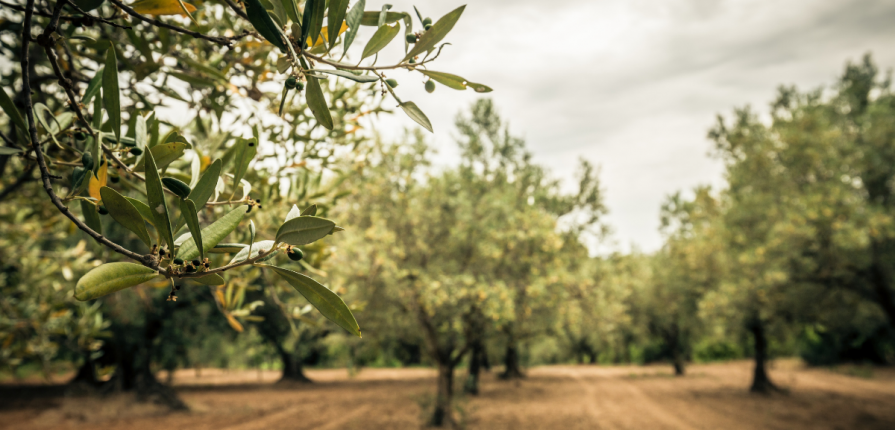



Recent Comments